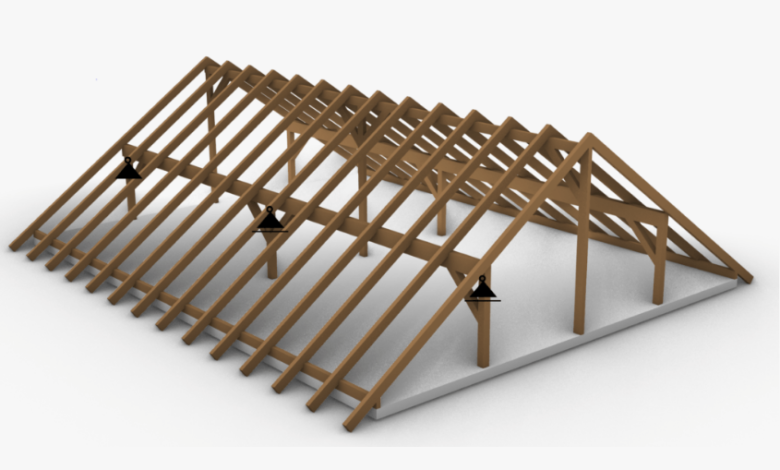Ensuring Secure Structures: A Guide to Using a Roof Snow Load Calculator

Key Takeaways
- Understanding the impact of snow loads on roofs is essential for maintaining structural integrity.
- Using a roof snow load calculator can help prevent costly damages.
- Accurate calculations involve considering geographical location, roof design, and material strength.
- Structural preparedness before the snow season can significantly mitigate risks of failure.
Understanding Roof Snow Loads
When designing a building, it’s essential to consider various factors, especially in regions prone to heavy snowfall. One crucial aspect is the roof’s ability to handle the weight of accumulated snow. A roof snow load calculator can be invaluable for accurate assessments, as it helps determine the appropriate design specifications needed to ensure safety and structural integrity. This tool allows architects and builders to better prepare for winter weather challenges. Understanding snow loads and their effect on structures is crucial for owners seeking to maintain their buildings’ integrity and safety.
What Is A Roof Snow Load Calculator?
A roof snow load calculator is a specialized tool designed to estimate the snow weight burden on a roof. It calculates projected loads by analyzing several essential factors, including your geographical location, which dictates common snowfall amounts, the roof’s pitch or angle, and the surface area the snow must cover. By integrating vast meteorological data, the calculator accurately predicts how much weight your roof might endure during heavy snowfall. Relying on tools like a roof snow load calculator ensures you can proactively address and mitigate risks before they escalate.
Factors Affecting Snow Load Calculations
- Geographical Location: The amount and occurrence of snowfall can differ significantly between various locations. Buildings in areas known for heavy snowfalls need a meticulous approach to ensure sufficient load-bearing capacity. Calculations must consider localized weather patterns that significantly influence snow load measurements.
- Roof Design and Slope: The design and slope of a roof are crucial in determining how much snow a roof can handle. Steeper roofs are often more effective at allowing snow to slide off, reducing the load. Conversely, flat or gently sloped roofs can accumulate higher volumes of snow, translating to more significant stress on the structure. Tailoring roof designs to accommodate these characteristics can enhance resilience.
- Material and Age: The materials used in construction and the age of the structure play significant roles in determining a roof’s capacity to bear heavy loads. Older rooftops or those constructed with less durable materials may not provide the necessary support, highlighting the importance of timely maintenance checks and reinforcements.
Why Accurate Calculation Matters
The importance of precise snow load calculations cannot be emphasized enough. They are essential for safeguarding against structural damage and ensuring the safety of the building and its inhabitants. Inaccurate calculations can lead to insufficient preparations, resulting in costly repairs or catastrophic failures. Structural engineers consider accurate assessments of snow loads crucial for upholding safety standards and preventing potential disasters. Property owners can protect themselves from unforeseen snow-related events by prioritizing precise calculations.
Steps to Take Before Snow Season
- Inspect the Roof Structure: Before the onset of winter, it is prudent to inspect the roof thoroughly. Assess any existing damage, such as leaks, weakened materials, or structural stress indicators requiring immediate attention.
- Use a Snow Load Calculator: Utilize a snow load calculator to predict potential weight loads your roof may encounter. This proactive step helps inform necessary precautions and reinforcements needed during the season.
- Reinforce Vulnerable Areas: Strengthen parts of the roof identified as weak during the inspection. Reinforcement can include adding trusses, using more substantial materials, or implementing snow retention devices to manage weight distribution effectively.
Real-Life Examples of Snow Load Failures
In recent years, regions experiencing unusual or record-breaking snowfalls have seen significant structural failures due to unprepared roofs. For instance, Minnesota witnessed widespread infrastructural damage, with several buildings succumbing to heavy and unexpected snow loads. Such incidents highlight the critical importance of preparedness and the catastrophic consequences of neglecting snow load assessments and preparations.
Best Practices for Using a Roof Snow Load Calculator
Combining regular roof inspections with the annual use of a snow load calculator proves highly effective in risk management. This can identify potential vulnerabilities before they manifest into problems. Consulting structural engineers can further refine these assessments, providing tailored advice based on specific geographical and structural nuances. Preparations should start well before the first snowfall to ensure ample time for adjustments or reinforcements.
Conclusion: Prioritize Safety and Structural Health
Property owners must prioritize building structural integrity and safety throughout the winter season. Utilizing tools combined with strategic maintenance and expert consultations can significantly influence a building’s ability to withstand the rigors of winter weather. Through diligent planning and informed decision-making, the risks associated with heavy snow loads can be effectively managed, safeguarding property and occupants.




